Did you know that 55% of customers worldwide want to buy products directly from a brand? Since brand websites offer more information about the product than retail sites, over 50% of customers choose to visit them for information related to the products.
More than a third of customers said they bought products directly from a manufacturer’s website in just the last year.
To meet this demand, 78% of direct-to-consumer brands have already increased their marketing budgets. As logistics and digital infrastructure continue to develop at warp speeds, more and more brands choose to communicate directly with their customers.
Why?
It’s because they’re in control of creating personalized experiences for their customers. By cutting out the middlemen and implementing customer feedback faster, a D2C brand communicates how much they value their customers.
When your customer feels valued and heard, they become evangelists for your brand.
No wonder we’ve seen a tremendous increase in D2C brands in the past decade. Retailers and wholesalers are also joining in. They’re starting to include a D2C channel in their overall strategy.
Take a look at this Google trends chart. We can see an increase in the So direct-to-consumer approach in the past five years.
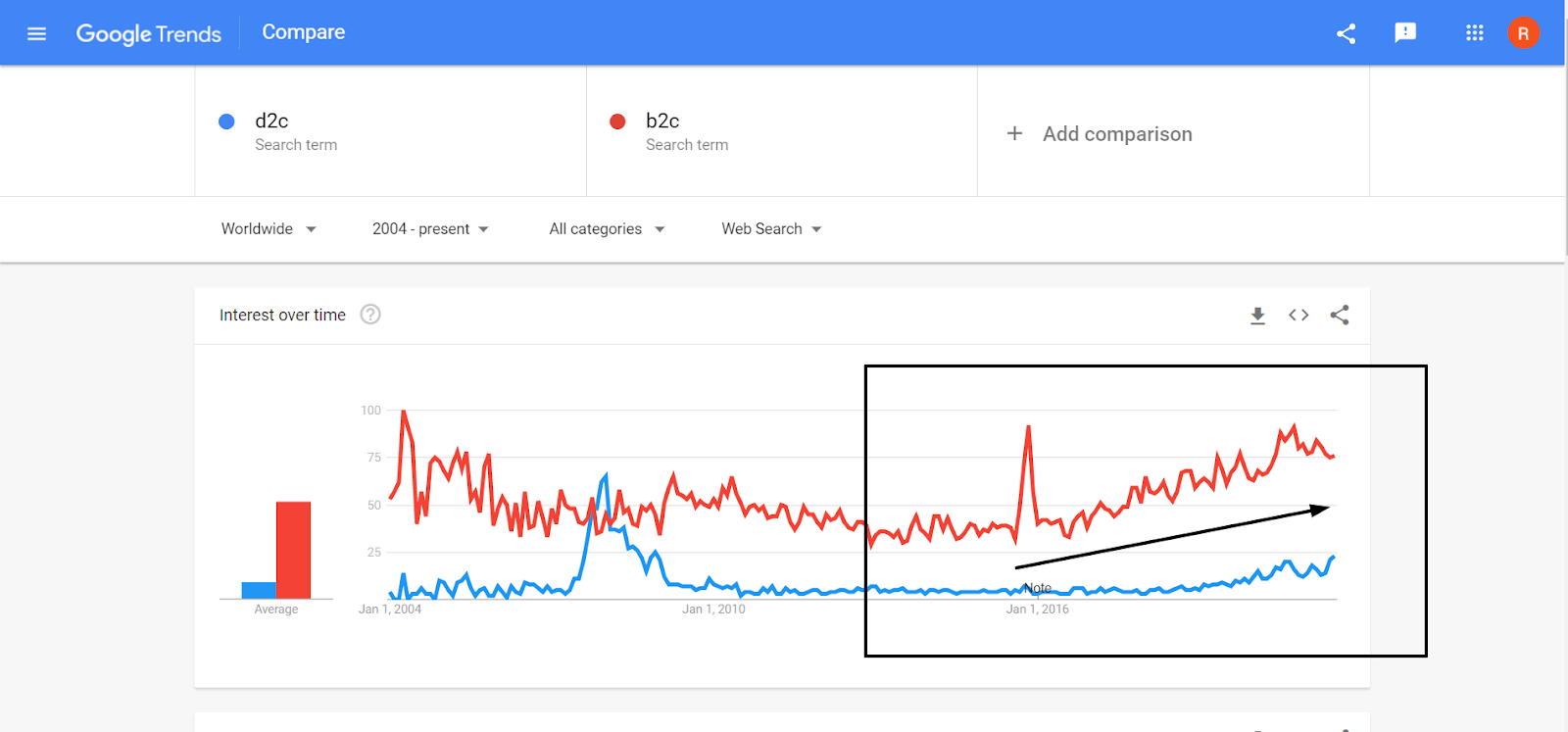
In the graph below, we note how eCommerce is shifting its ways and embracing a more direct approach with consumers in the graph that follows.
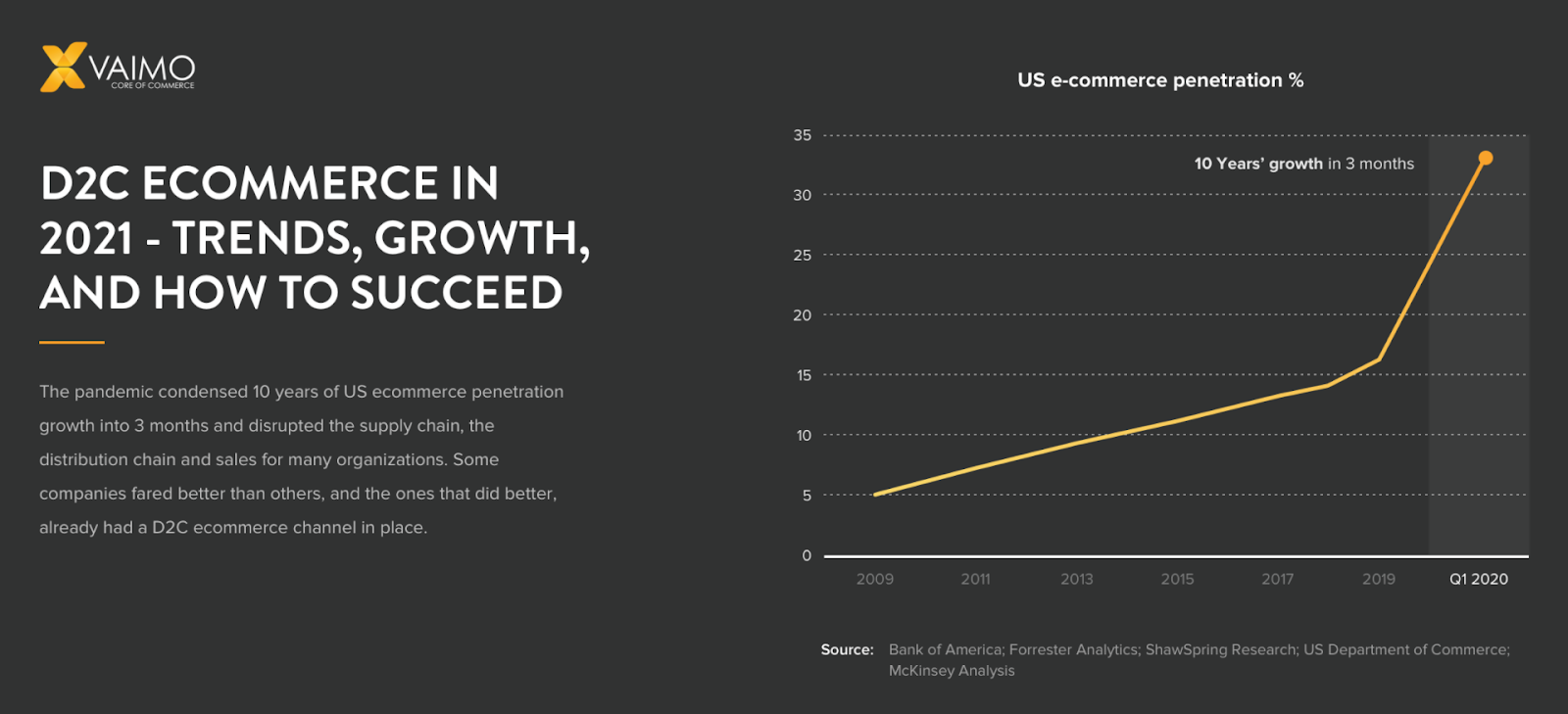
The pandemic has a lot to do with this shift. With the lockdown causing more and more brick-and-mortar stores to shut down, it brought many eCommerce owners online.
We mean 100% online.
Through this post, we hope to show you how the legendary disruptors of eCommerce found success with their brands. In addition, we want to provide you with actionable steps you can take to boom your brand.
So, whether you use a B2C or a direct-to-consumer strategy, we’re certain you’ll find this article useful.
Top Disruptors Of eCommerce That Found Success Going Direct To Consumer:
1.Warby Parker
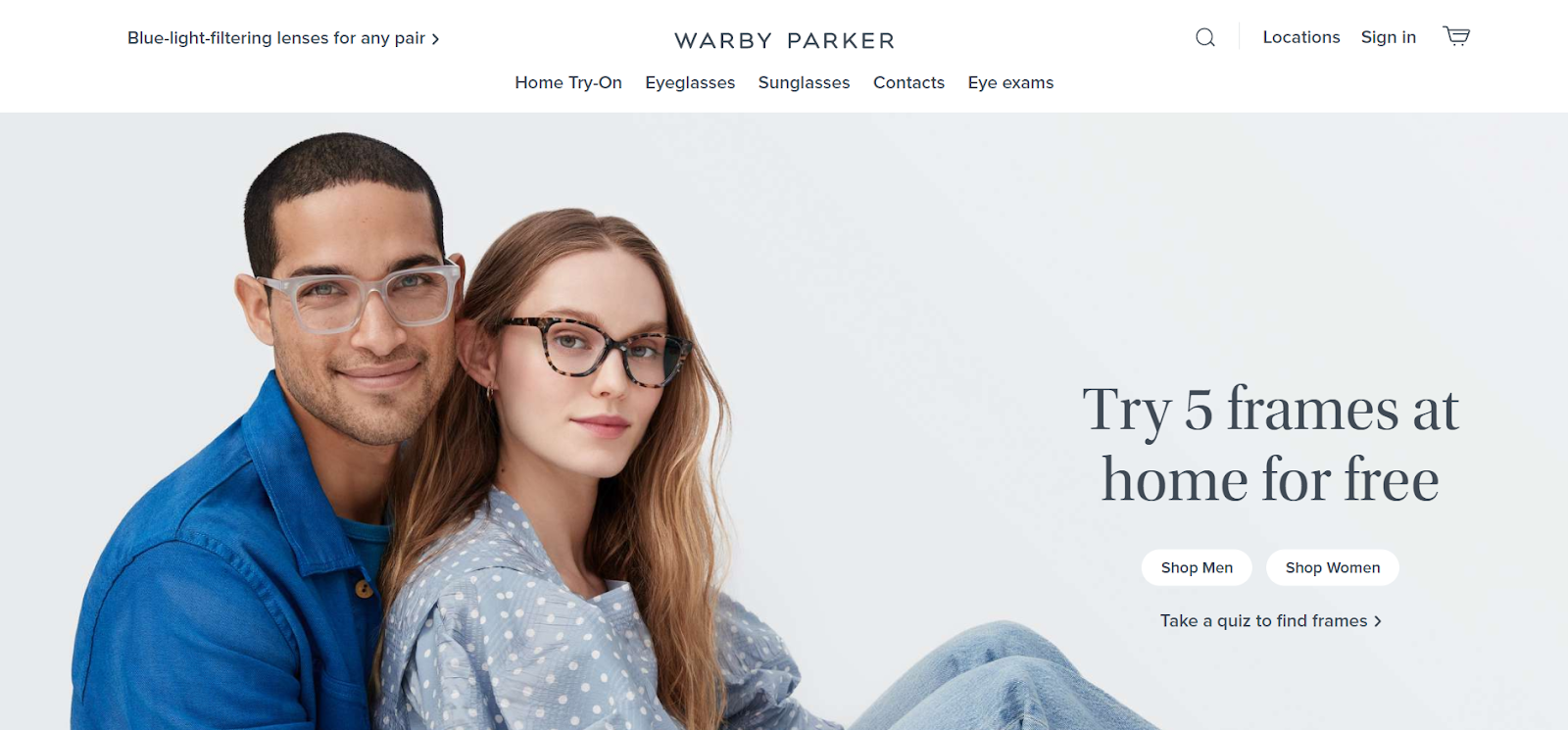
Brief Outline
The disruption Warby Parker caused in the eyewear industry makes them a pioneer D2C brand.
Four friends, Andy Hunt, Dave Gilboa, Jeff Raider, and Neil Blumenthal, started Warby Parker in the Wharton School of the University of Pennsylvania as part of their Venture Initiation Program.
They realized how expensive and inconvenient it was to buy a pair of glasses. Warby Parker took on the goliaths of the designer prescription eyewear industry by introducing a “try at home and buy” scheme.
The company came into existence in 2010, and they hit the sales target for their first year in just three weeks!
The Challenge
“Glasses are too expensive.” Fashion prescription eyeglasses cost people hundreds of dollars. The founders of Warby Parker wanted to change this problem.
They wanted to create a brand that would allow the masses to own a pair of designer glasses at radically lower prices. Additionally, they wanted to be a socially conscious brand.
For decades, Luxottica dominated the eyewear industry with an 80% market share. They owned brands like Ray-Ban, Lenscrafters, Oakley, Sunglass Hut, and Pearle Vision.
This monopoly was the reason for such artificially inflated prices for designer eyewear. People could buy eyewear only after shelling hundreds of dollars at their optometrist’s office.
Their Solution
Warby Parker tackled the expensive, bloated supply chain head-on. Through the verticle integration model of eCommerce, they could drastically cut down the rates of their eyeglasses and ensure control over the entire customer experience.
The model was simple. Customers could select five frames they liked, and they would receive these in the mail for a five-day try-on period. There’s even a prepaid return label included to ensure a free trial. During these five days, customers can place their final order online.
With fast and efficient eCommerce shipping, 30 days return or exchange policy, and exceptional customer care, Warby Parker became the new favorite brand for eyewear for all within the first year of their launch.
Since their marketing budget wasn’t too high during the initial days, the company hired a PR firm to create buzz. This PR firm was able to get an interview with both GQ and Vogue magazine.
The founders had to expedite the launch of their website because both magazines advanced the article’s release date. Unfortunately, this acceleration resulted in their website crashing on launch day. There was a long waitlist of 20,000 people.
But, all four founders got to working and individually sent out an email to apologize for the delay. People loved this human touch and transparency! The brand was a disruptor of eCommerce marketing and a pioneer in D2C marketing.
Key Stats

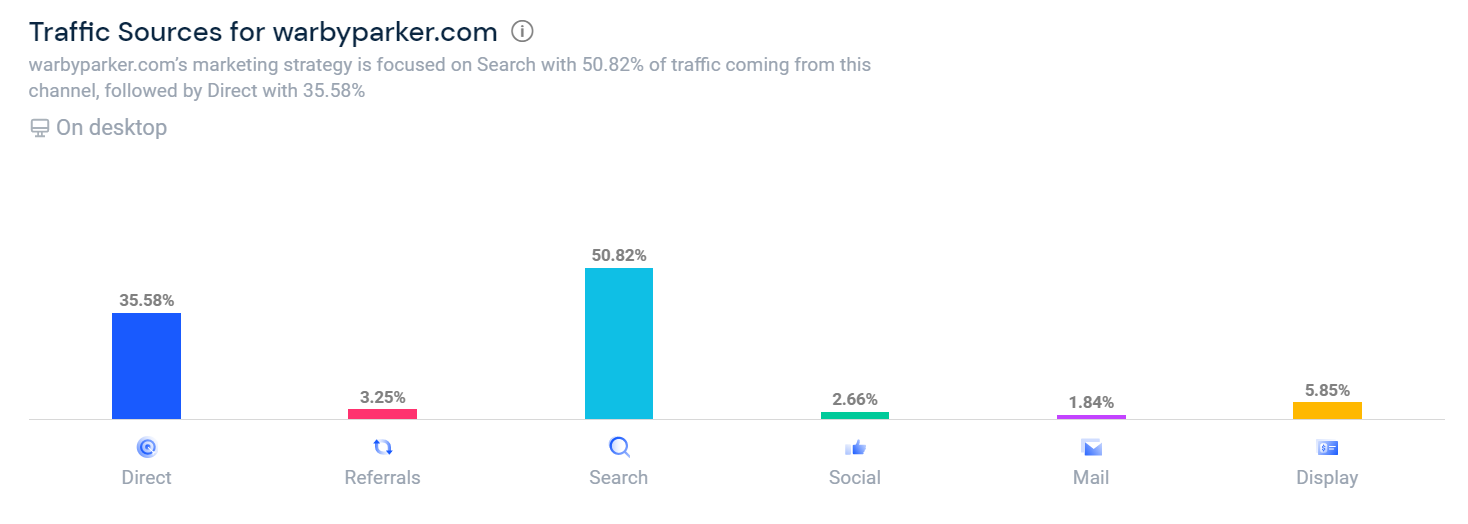

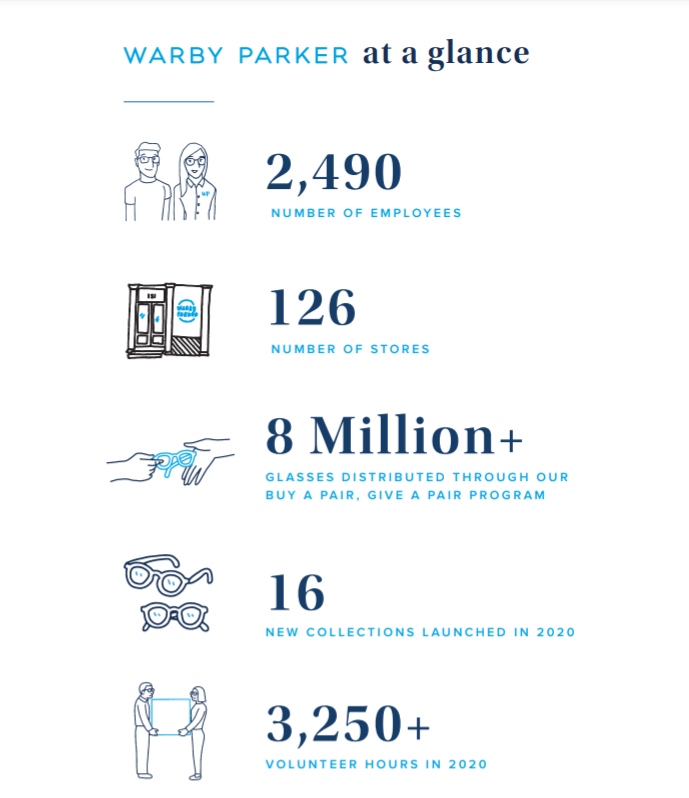
Key Takeaways
- Customers Love Transparency.
- When Warby Parker had to launch their website sooner than expected, their team immediately sent out an apology email to all those on the waiting list.
- And this transparency in their general execution of business was why early adopters turned into brand advocates.
- Be a Visionary in Streamlining your Operations:
- The strategy to vertically integrate the eCommerce operations allowed Warby Parker to completely control their supply chain and distribution. This strategy allowed them to lower their prices drastically.
- It also meant that the customers and the brand had a direct communication line. This communication line further meant Warby Parker could implement customer feedback immediately. The brand was what the customers needed them to be.
- Your Customer Feedback and Data Drive your Brand:
- The biggest reason for the growth of this D2C brand was how quickly they could reflect the feedback given to them.
- Warby Parker looked at data they gathered right from the get-go, and this very data ran through every business decision.
- This data also included opening up brick and mortar stores when the customers needed it, even though they wanted to be a digital eyewear brand.
2. Casper
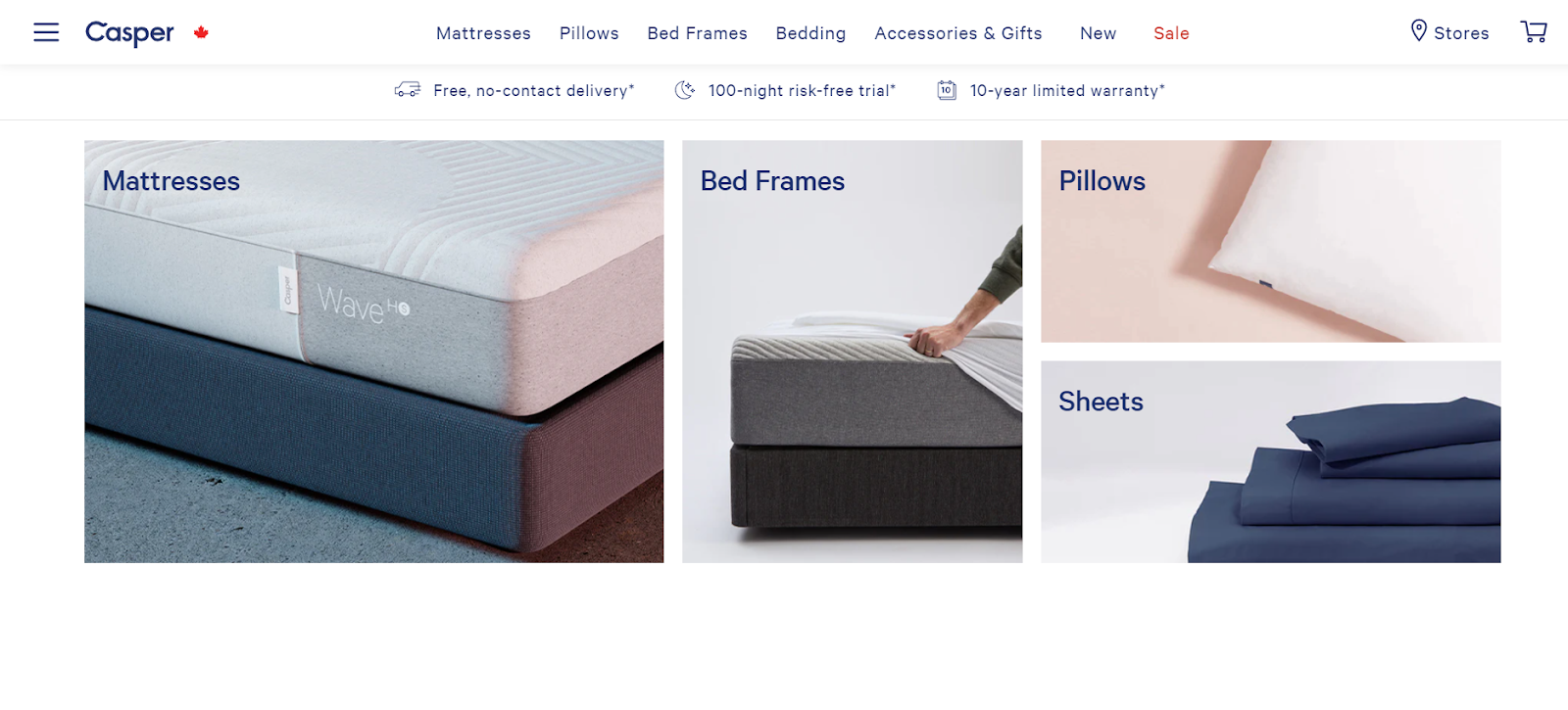
Brief Outline
Mattress selection is an overwhelming process. But you need a mattress, and so, you have to go through this struggle. No wonder it was a $14 billion industry even as early as 2014.
In April 2014, Casper disrupted the mattress industry with its famous “bed-in-a-box” concept. Founders Jeff Chapin, Philip Krim, Neil Parikh, Gabe Flateman, Luke Sherwin, had a simple idea:
- Simplify the mattress selection process by creating a single model.
- Give the customer the best mattress at a budget-friendly price.
- Deliver free and fast with a trial period of 100 days.
Casper’s customer-first approach worked wonders. They hit $1 million in sales in their first month! Casper then raised a venture capital of $70 million and grew to hit $100 million in sales with a team of 120 people.
The Challenge
An average luxury mattress clocks in at $3000 or even more. Add to this the inconvenience of moving a heavy mattress.
Luke Sherwin and Neil Parikh were living in a fourth-floor walkup in New York. So when they needed to get a mattress from their door to the bedroom, they knew there had to be a better way.
Thus came the idea of Casper, a novel idea of having a mattress-in-a-box that would be affordable and convenient.
A monopolistic supply chain and a sales structure that ran on commissions ruled the mattress industry for decades. No wonder the inflated prices and high margins. Plus, the customer’s experience was never in the conversation for these goliaths.
Their Solution
Casper’s vision to redefine an established and thriving industry meant they had to revolutionize the way customers thought about their mattresses.
They served their customers with an excellent, custom multi-layer foam mattress they could squeeze into a 3.5 ft tall box and ship across North America.
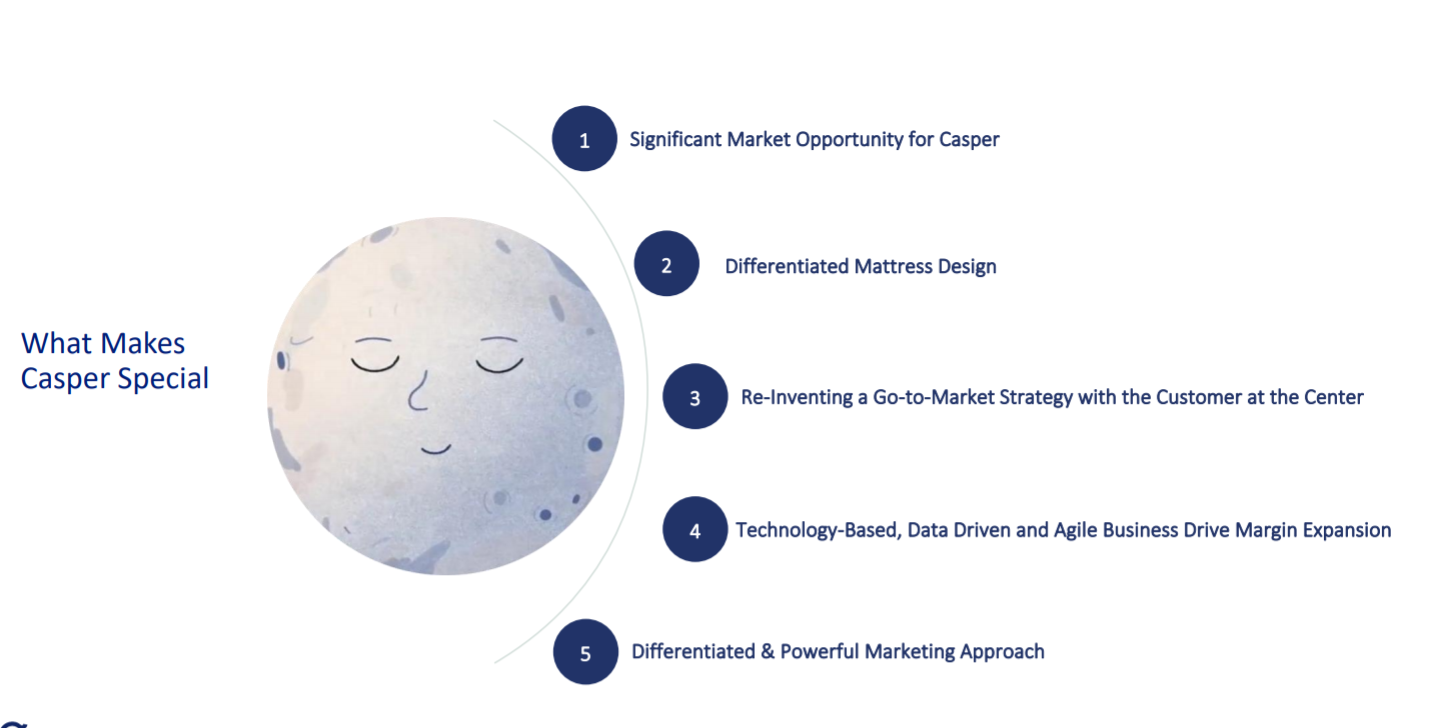
Their headless eCommerce site allowed customers to make their transactions directly with the brand. This control in communications further allowed them to:
- Be in control of their customer’s experience.
- Have control over how customers engage with Casper.
- Acquire customer data to improve their strategies.
- Lower the costs significantly by cutting out wholesalers and retailers.
But these points were a given for a D2C brand like Casper.
What helped Casper make headway into the mattress industry was mostly content marketing. They positioned themselves as the experts in not just the mattress industry but the sleep industry!
Having content marketing as their central strategy allowed them to leverage the power of blog posts, videos, and social media posts and placed themselves as the sleep industry experts.
The results were astounding from day one. On the day their website went live, Casper sold out its entire inventory (40 mattresses). The founders expected to sell $1.4 million worth of mattresses in the first year, but they hit their target in just two months!
Key Stats

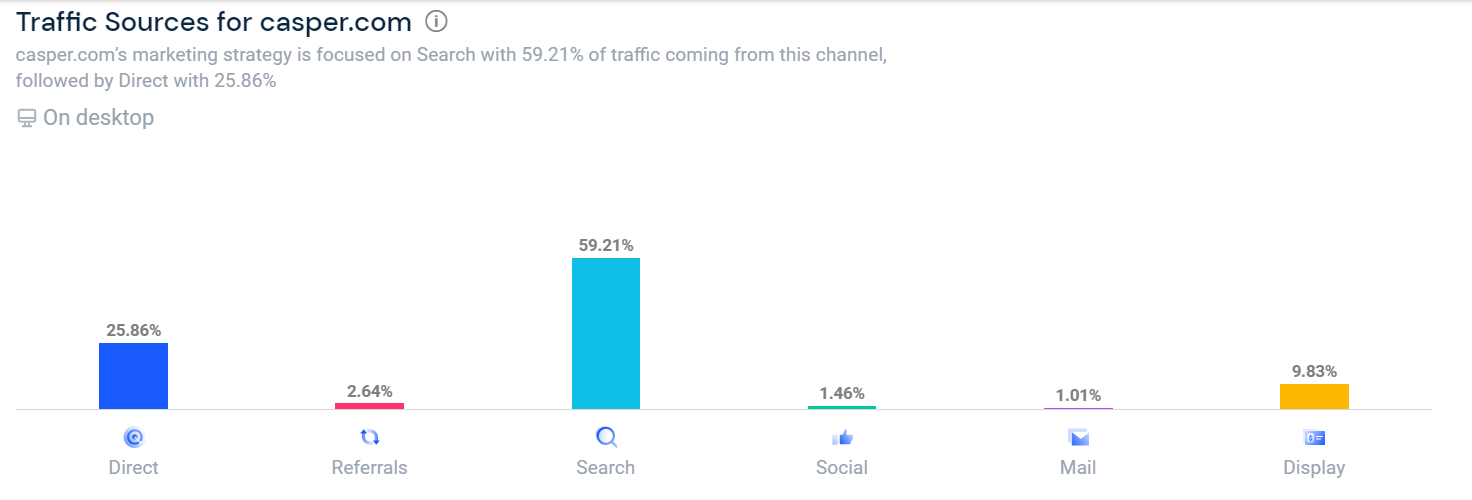

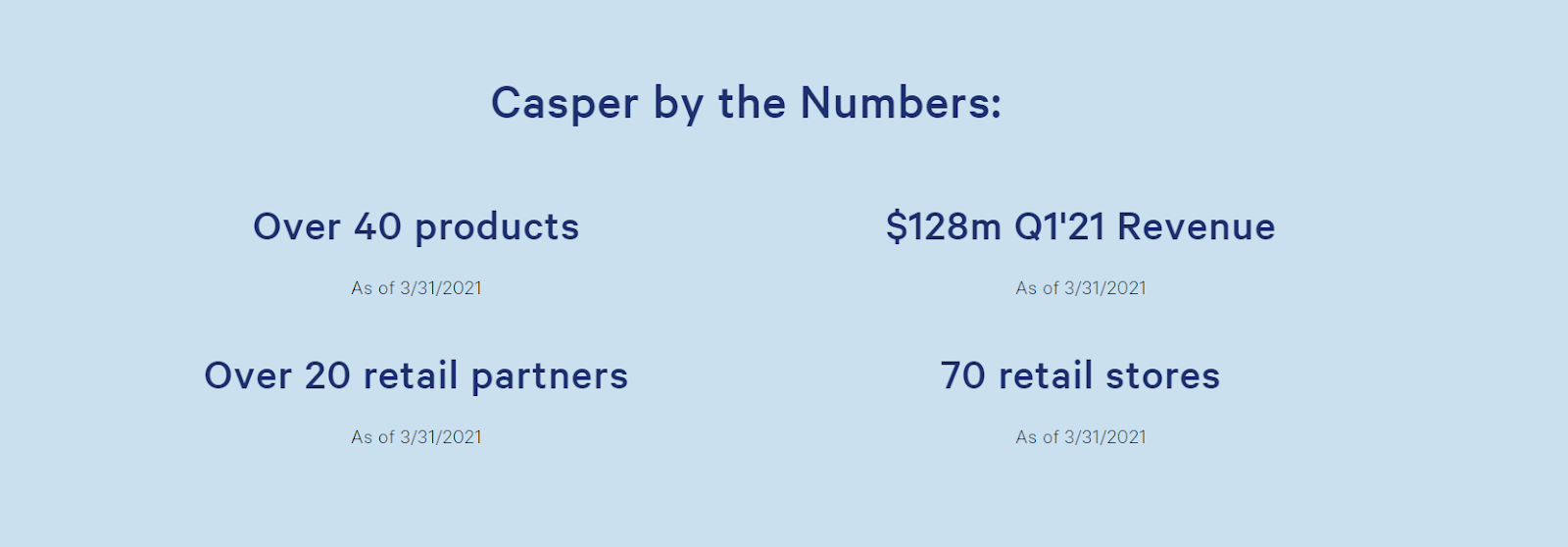
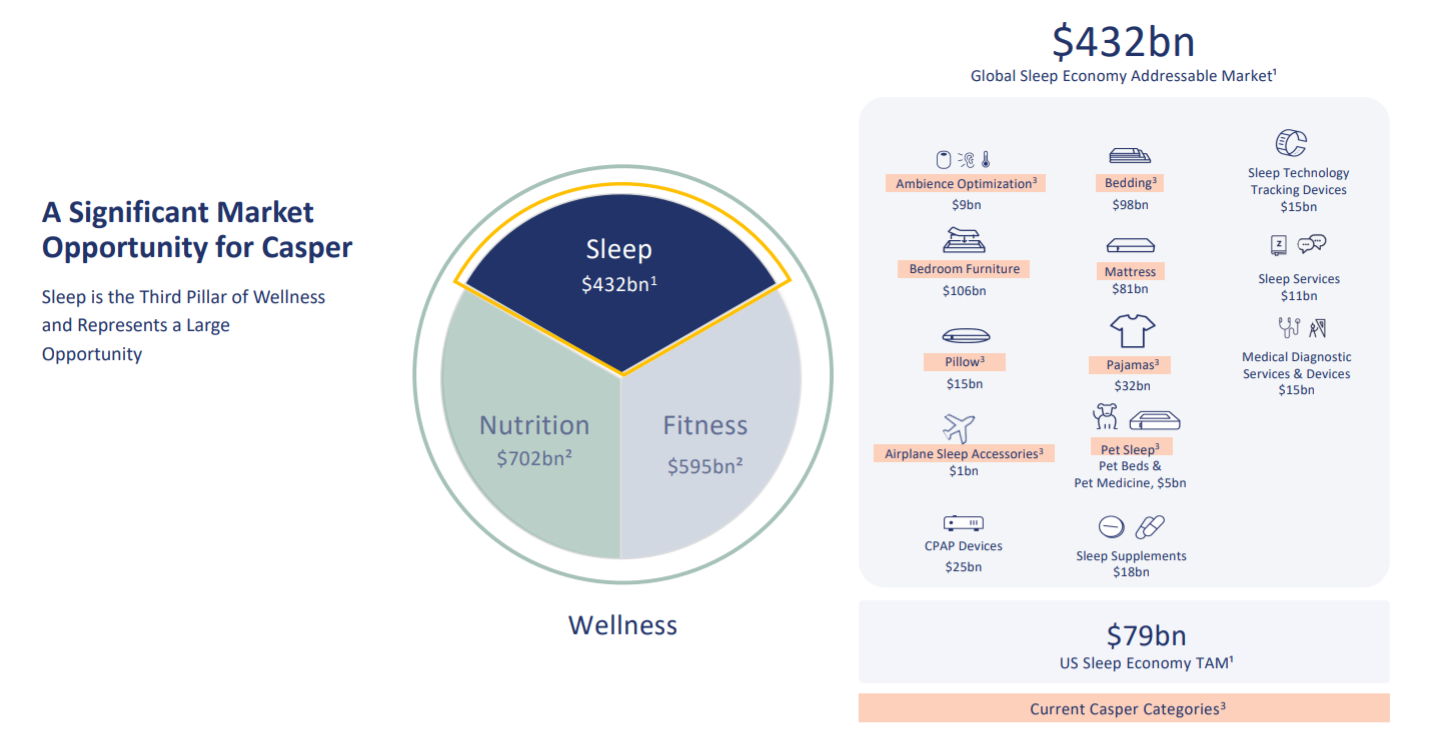
Key Takeaways
- Boldly Reinvent your Customer’s Buying Experience
Casper’s mattress-in-a-box concept wasn’t one that anybody ever imagined before. Of course, this out-of-the-box thinking is highly risky. But, as with high risks, when they stick, they pay great returns.
To boost customer engagement, Casper encourages its customers to send them a video of their unboxing experience. They have a special section dedicated in their FAQ section to address this point:
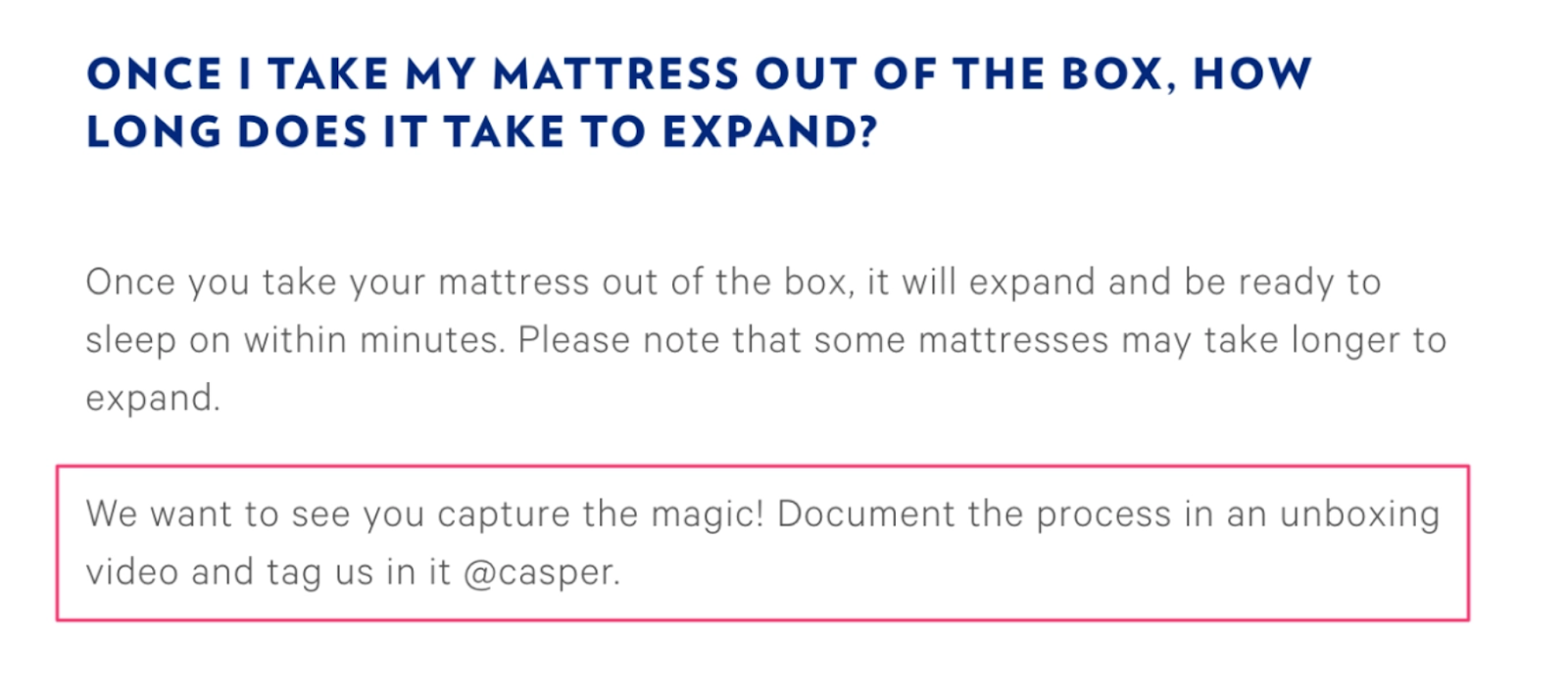
- Leverage the Potential of Content Marketing
Casper relentlessly puts out content that their users are searching for. Casper has successfully established itself as the industry expert by comparing products, talking about benefits, or providing general information about sleep.
Add this to the customer reviews and other content from customer engagement; the brand builds loyalty and trust through their social credibility.
- Generate More Leads Through Re-Targeting.
Did you know that 97% of your visitors don’t buy from you the first time they visit your site? Enter: retargeting. The CTR for retargeted ads, on average, is 10X higher than display ads.
Research suggests you can increase your CRO up to 150% through retargeting your customers.
3.Allbirds
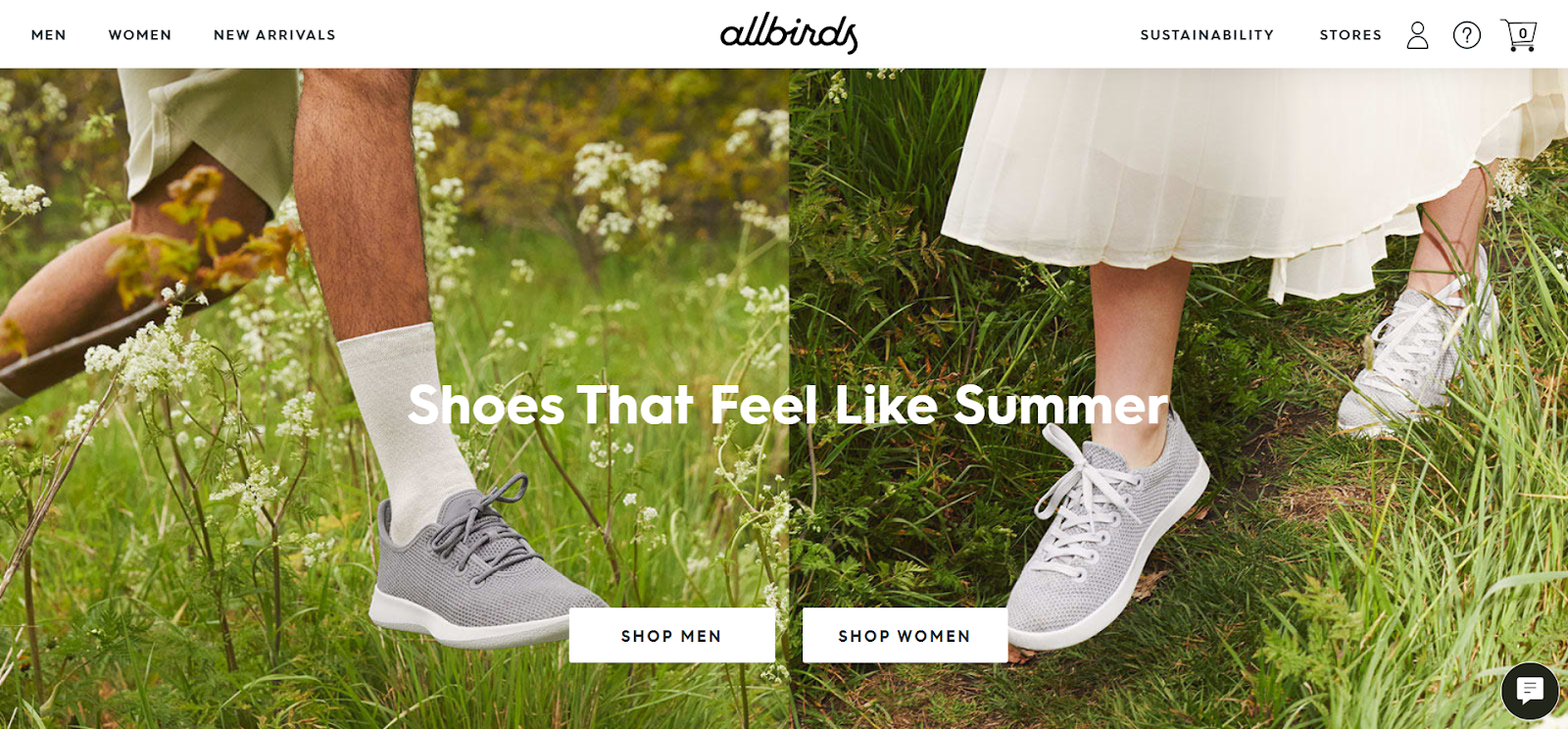
Brief Outline
Allbirds is a sustainable footwear brand created by Tim Brown and Joey Zwillinger. They became famous for using New Zealand’s merino wool to create simple, muted, and comfortable sneakers that people could wear everywhere.
Tim was an eight-year professional soccer player and New Zealand’s vice-captain in 2016. Post his retirement from soccer, Tim gained his master’s in management from the London School of Economics in 2013.
Then began the journey of Allbirds, Tim’s vision of having a sustainable sneaker brand made from wool. A certified B corporation, Allbirds has achieved tremendous growth. Today, this D2C brand has a $1.4 billion valuation.
The Challenge
Everywhere you see, you can find brightly colored, heavily branded shoes. This lack of simplicity was Tim’s struggle too. He wanted a pair of simple shoes that were comfortable for long-wear.
This idea of being a whisperer amidst all the chaos and noise was why he started Allbirds. Together with Zwilligner, Allbirds set out to solve the following problems:
- Simple, clean, non-branded shoes were too difficult to find.
- Comfortable shoes that can function well as gym shoes and casual wear were rare.
- The footwear industry had a large carbon footprint.
Their Solution
Tim Brown, a native of New Zealand, wanted to highlight his cultural heritage within his brand.
Even “Allbirds” references New Zealand’s first inhabitants who found no animals when they came to the land of “all birds.”
Partnering with a wool industry research group and government agricultural scientists, they patented a shoe material made of merino wool.
For the soles, they formulated a combination of foam and rubber, and some models even use castor bean-based components that are more sustainable.
The shoes were :
- Durable
- Sustainable
- Fashionable
- Comfortable
- Affordable
For their launch, Brown started a Kickstarter campaign. He described his minimalist sneakers as “world’s first woolen running shoes designed to be worn sockless.” They highlighted the ease of use, the comfort of wear, the durability and resilience, and of course, how beneficial to the environment the shoes were.
Wanting to raise $30,000, Allbirds ended up selling 1064 pairs of shoes and raising $120,000 in funds. A Time magazine profile on the launch day for the wool runners helped catapult the brand’s success. Soon, The New York Times called Allbirds the “Silicon Valley’s cobblers.”
The more funds Allbirds raised, the more their sales, and vice-versa.
Soon A-list celebrities like Oprah Winfrey, Gwyneth Paltrow, Matthew McConaughey, Mila Kunis, and Jennifer Garner started sporting these shoes, and the brand continues to grow today.
Today, Allbirds has a valuation of upwards of $1.4 billion.
Key Stats

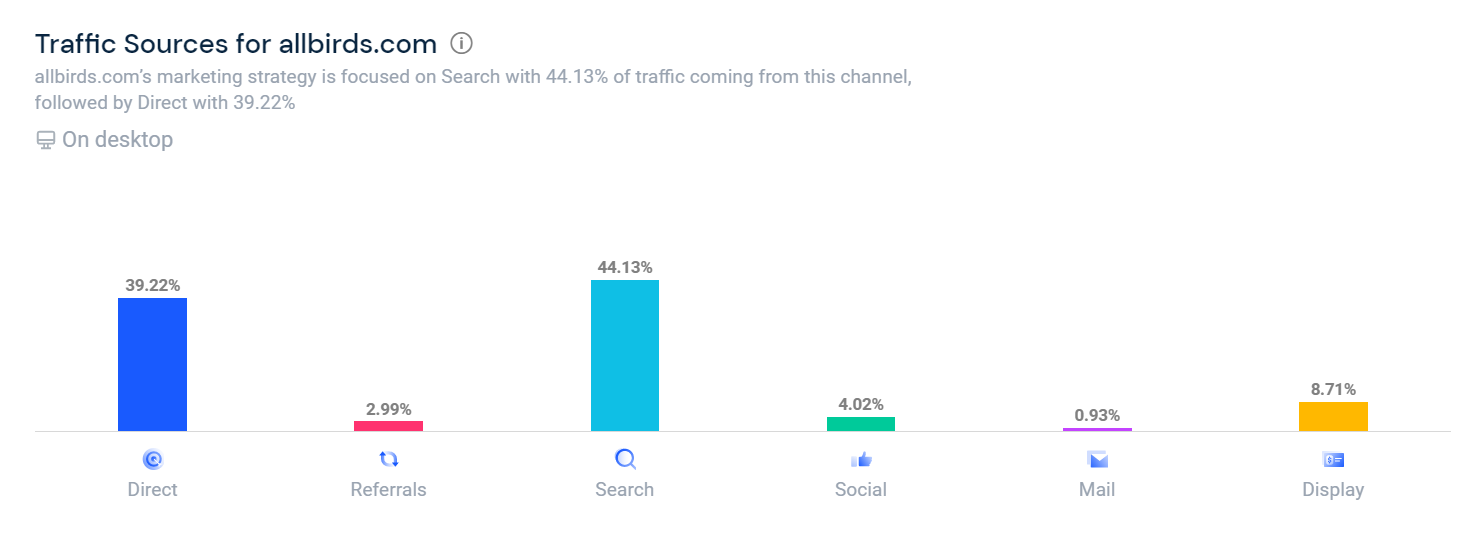

Key Takeaways
- Prioritize the Quality of Products Over Sustainability
People aren’t loyal to a brand just for its sustainable business model. Being eco-friendly is a push for people to purchase an already excellent product.
Allbirds is big on sustainability, but they’re even big on their product quality. This focus on quality ensures people love the product.
Over and above, they feel proud to take part in conserving the environment. Never the other way around.
- Sustainable eCommerce is a Rewarding Strategy
Setting up a sustainable eCommerce brand takes a lot of effort. First, you need to get all the certifications to prove you are a sustainable brand. Secondly, you need to focus on strategies to reduce your overhead in the initial days.
But, 6 in 10 customers are willing to pay more if the brand is eco-conscious. Simple steps like the following can help you transition into an eco-conscious brand:
- Reduce packaging.
- Reduce energy waste.
- Create recycling policies.
- Create a marketplace to resell used merchandise.
- Build Credibility
Whether it’s gathering social proof for your product quality or gaining patents for the originality of your products, building credibility is important.
Allbirds took the time to create a unique product and got all the certifications needed to highlight the authenticity. Then a community of people shared their trust with the brand.
Building a community whose values align with yours will propel your sales perpetually. 77% of consumers want to buy from brands that share similar values as them.
4. Everlane
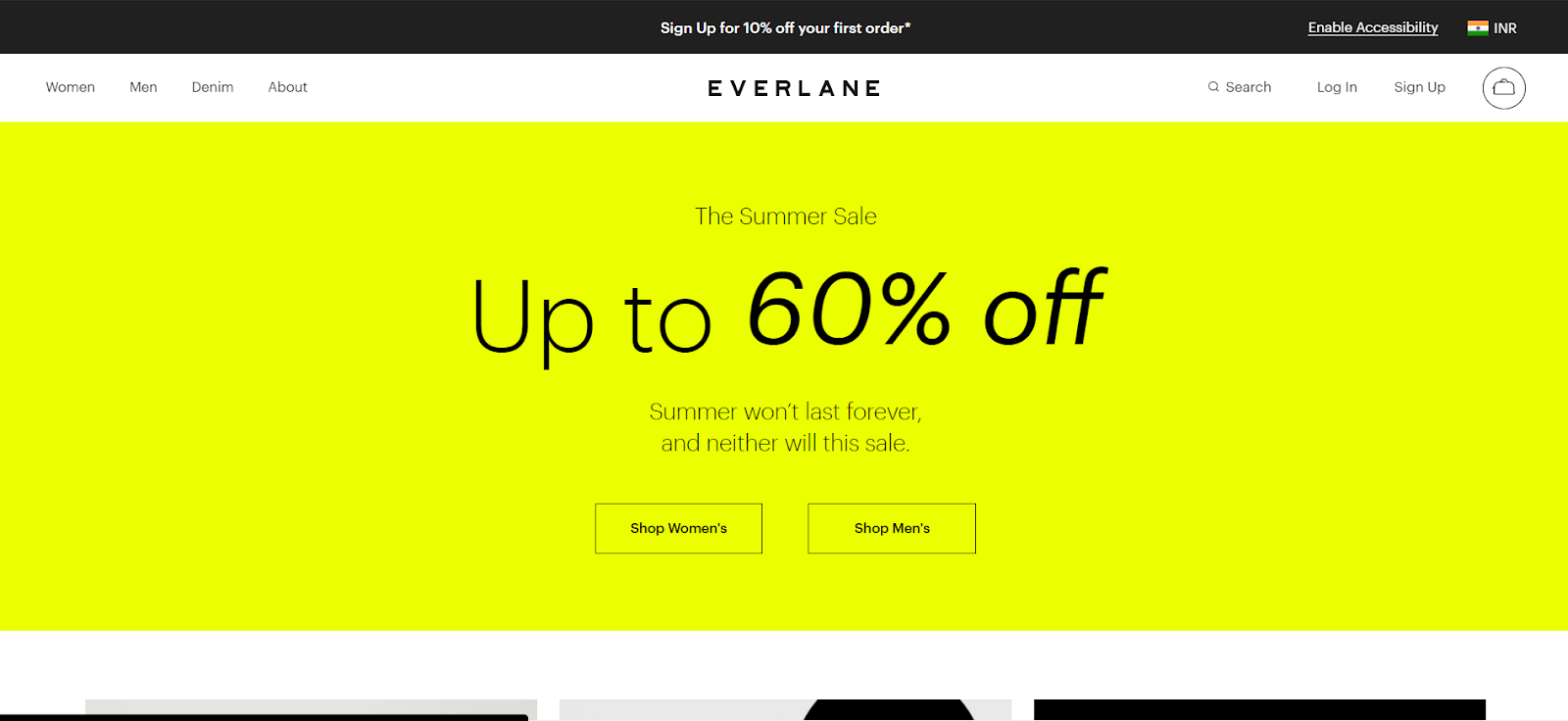
Brief Outline
Everlane is a vertically integrated apparel store that focuses on the ethical sourcing of high-quality garments for men and women.
- What sets them apart is their radically transparent approach.
- The clothes last for decades.
- Each customer knows where their clothing is coming from.
- In addition, customers know the markup percentage.
Founded in 2010, Everlane’s strategy to be a transparent and ethical brand resulted in today’s success.
The Challenge
Everlane was started in 2010 when customers were paying ten times the cost to make the apparel. So they set out to challenge the fashion industry, nay, disrupt the industry with their radical approach. Everlane’s founders Michael Preysman and Jesse Farmer wanted to address the following concerns their customers had:
- Are the factories that create the apparel ethical in their dealings?
- Why don’t the customers know the price breakdown?
- Do the garments last long, or are they trend-centric?
Their Solution
The only way Everlane could address the concerns mentioned above was to use the direct-to-consumer route. They had total control over their entire funnel.
While creating a radically transparent brand that’s adamant about delivering ethically sourced, high-quality deliverables, their focus on what mattered most is what helped this niche-centric brand thrive.
Unlike other brands that try to please all consumers, Everlane focused on serving consumers that:
- Appreciated ethically sourced apparel. This sourcing includes details about the entire supply chain (factories, raw materials, labor laws, etc.)
- Looked for long-lasting quality over trends. This quality over trend approach meant they sought customers who would pay for designer wear dresses as long as the price justified the shelf-life.
- Welcomed a minimalistic style. This style meant that the garments wouldn’t be fancy or loud, rather simple staples. This strategy also set them apart from many of their competitors that tried to cater to the masses.
Being radically transparent about their prices and markups worked in their favor. It became Everlane’s USP. In addition, their pre-launch program to get a product for a certain amount of referrals worked wonders.
Although the brand had 1,500 T-shirts in their inventory, their referral invite list popularly won 60,000 subscribers within five days. Finding their audience on Tumbler and using infographics to reach them was a clever way to attract their audience while creating buzz.
People appreciated and honored the transparency.
In 2015, Everlane received a seed funding of $1.1 million. In addition, partnering with Postmates as their delivery partner allowed them to provide customers with same-day delivery options, which further boosted their growth.
Their affiliate program added to their returns.
Everlane originally started with the idea of being an online store. Still, because they listened to the needs of their customers, they realized the value of opening brick-and-mortar stores.
Listening to your customers and delivering their requests ensures loyalty and referrals.
True to their claims of being radically transparent with their prices, Everlane introduced the “choose what you pay” pricing model for their merchandise. The lowest price would cover production and shipping costs, and the higher price points would include overhead.
The success of each strategy is visible today. In 2017, the company’s valuation was at over $250 million.
Key Stats

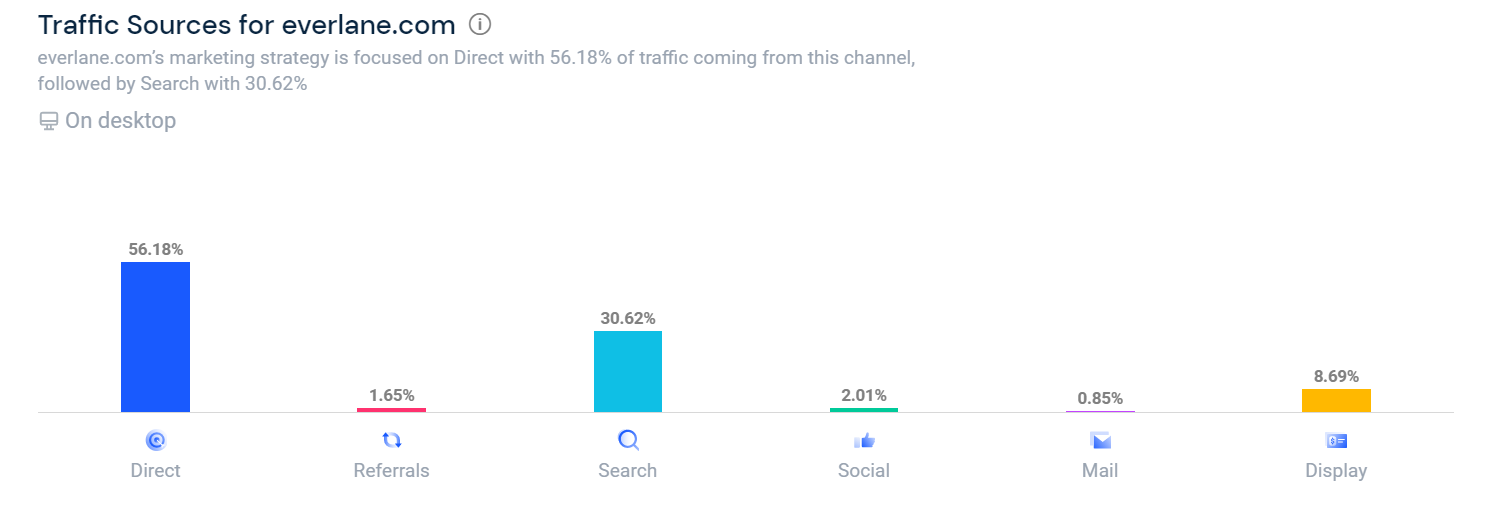
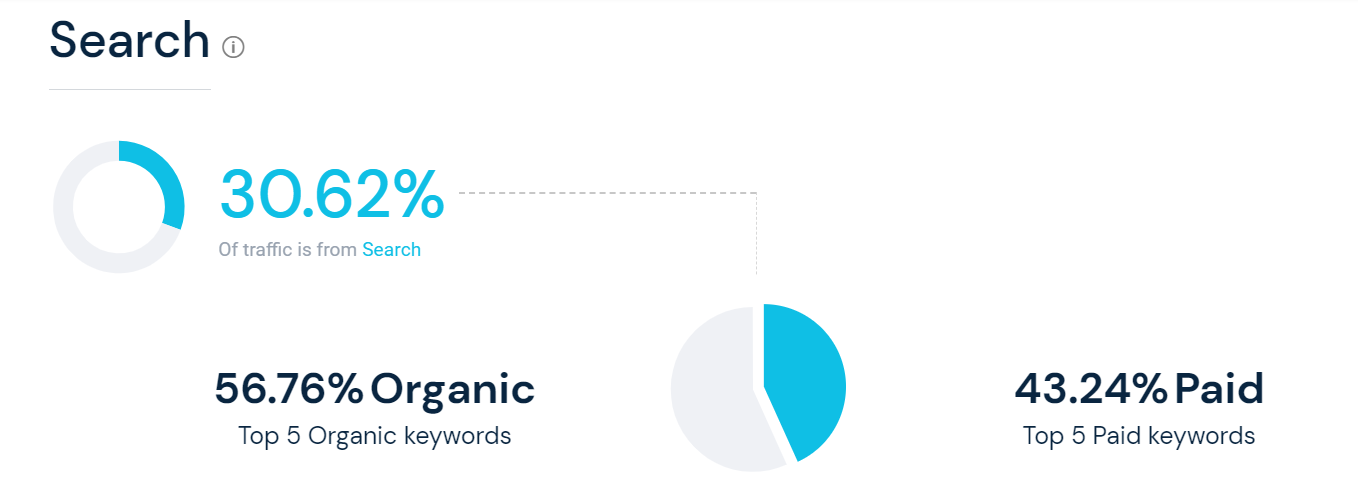
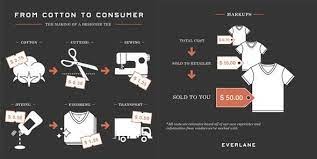

Key Takeaways
- Clarity in Vision
When Everlane launched, they had a clear-cut strategy on how they would like to proceed. Being transparent has a long list of challenges. You have to be willing to let go of a percentage of the revenue pie if needed.
Also, we’ve noticed many brands start with big claims but sustaining the same becomes challenging a few years in the running. However, Everlane maintains its vision and mission statements, and customers reward their efforts.
- A Solid Pre-Launch Strategy
With Everlane’s prelaunch, they gave tiered rewards to all users who referred their friends to the prelaunch. The prelaunch went on for over six months. This period meant there was enough time for them to create some buzz. The mystery that something exciting is coming was enough for over 60,000 subscribers to sign up for the launch.
Their strategy to reach a young audience through Tumbler was unprecedented for the times. They created infographics about their business model and pricing strategies which received a lot of attention and shares. This strategy speaks to how creative the brand was and how they were unafraid to push boundaries.
- A Great Affiliate Program
Although affiliate marketing is a part of many eCommerce strategies today, Everlane was creative to infuse an affiliate program into its strategy in those days. Their robust affiliate program allows affiliates to be excited and ready to spread the word. Affiliate programs can result in a 15-30% increase in your profits. If you’re an eCommerce brand, this is a strategy to include in your marketing efforts.
5. Dollar Shave Club
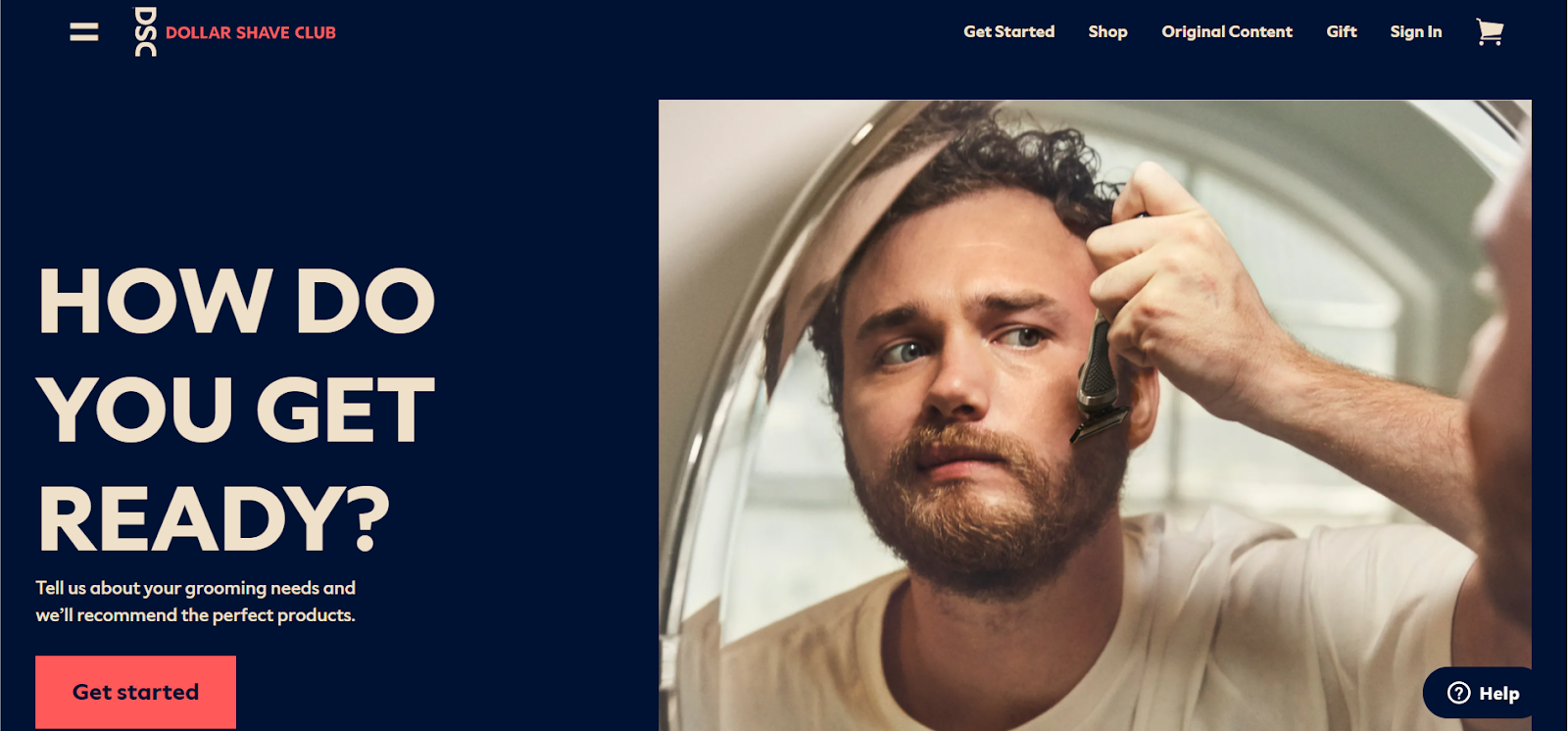
Brief Outline
Our list would be incomplete without mentioning the billion-dollar exit of Dollar Shave Club. A company that started from scratch by founders Michael Dubin and Mark Levine scaled to becoming the major competition for the monopolistic reign of Gillette, eating away over 25% of its market share, finally getting Unilever to buy out DSC for a billion dollars in 2016.
The Challenge
Mark Levine came to Michael Dubin with a specific problem. He had 250,000 razors he sourced from Asia, and he wanted Michael to help him sell them.
In 2011, when the duo was discussing business plans, the two challenges in the market at the time were:
- Razors were unnecessarily expensive.
- Buying razors is a frustrating experience.
The monopoly over the market share by the likes of Gillette and Schick made the markup on razors high. Michael Dubin wanted to go head to head with the goliaths of the razors, and thus came the idea for Dollar Shave Company.
Their Solution
Even though millions used razors, the problem of a few brands owning major chunks of the market share caused the markups to be ridiculously high. Michael Dubin wanted to stand against this very challenge. And he did so successfully right from the launch video of Dollar Shave Club.
Their “our blades aren’t just good; they’re f*ing great” made the masses go wild, and they received 12,000 new subscribers within 48 hours of the video going live. The Gillettes and Schicks began to notice a significant portion of their market share going Dollar Shave Club’s way.
Defining a target audience: people in their twenties and thirties who didn’t have enough funds to buy expensive blades and weren’t loyal to big names like Gillette. This specificity allowed the founders to craft their video commercials uniquely for their audience. This streamlining of their strategies was a major reason behind their billion-dollar buy-out.
Another reason for the brand’s success is its futuristic business model. These days, we understand firsthand how valuable a subscription model is. But in 2011, combining a trading model (purchasing products in bulk from smaller companies and selling them at a profit) and a subscription model (investing in customers and acting as a club for its customers, a.k.a. members) was visionary.
Key Stats

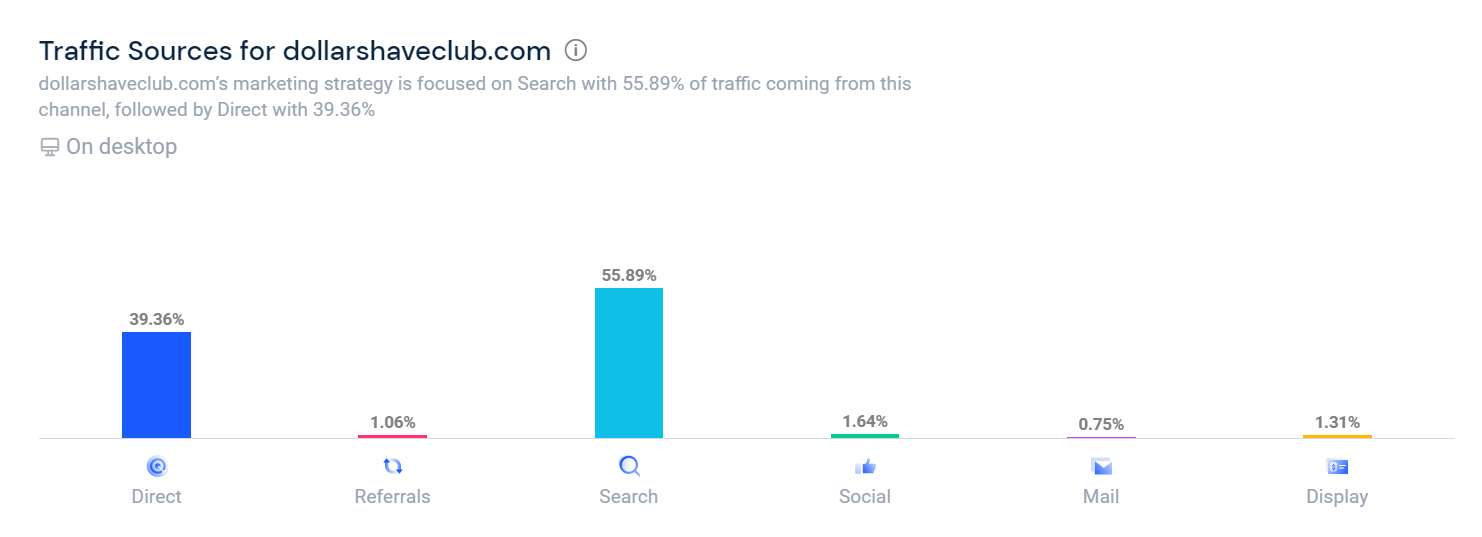
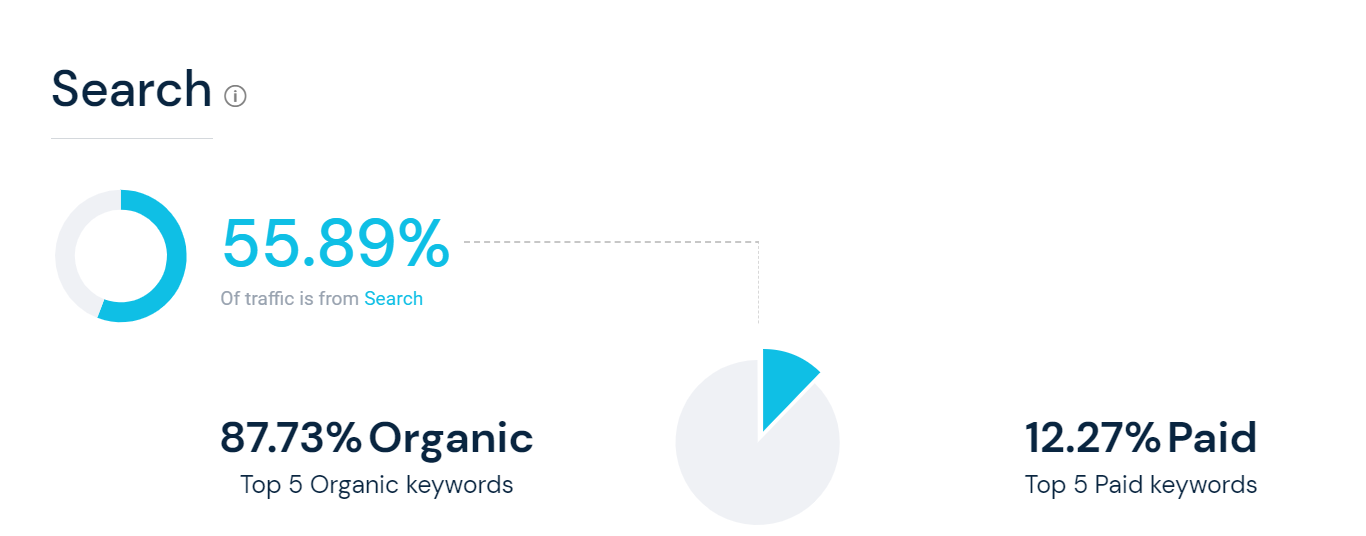
Key Takeaways
- Membership Programs Over Loyalty Programs
Gone are the days when people wanted rewards for being loyal to your brand. A retail loyalty program will get your participant to spend $42.33 over a regular customer. But 49% of shoppers are already part of a subscription model, according to research from McKinsey.
Customers today seek value. They want exclusive insider benefits. Customers want to feel part of your brand and its story. They want to feel part of your community. A membership program will allow you to have a steady source of revenue.
- Use the Power of Videos to Gain Success
The most viral commercial that introduced Dollar Shave Club gained 4.75 million views. This video, although simple, addressed every pain point a customer had. The video generated 12,000 orders in just 48 hours.
The Aberdeen Groups research shows that companies who add video marketing to their strategy have witnessed a 49% faster Y-o-Y. In addition, they receive 34% higher conversions and a 41% boost in web traffic.
- Communicate the Future your Brand Wishes to Prevent
DSC showed men what a future would look like if this ‘one dollar a shave’ alternative weren’t present. Having a great razor for just a dollar and a subscription model to get replacement blades every month was the best decision for a customer to make.
Adding to this, the fun names of products (One wipe Charlie) and a successful membership program allowed them to tap into their audience’s emotions. This strategy led to a lasting relationship between their whales and the brand.
Direct To Consumer Trends To Look Out For In 2022
Now that we’ve seen the major examples of direct-to-consumer successes, as promised, here are the trends to remember as you strategize your D2C business model. Marketing is changing as the internet evolves.
Brands are readily embracing new trends and adapting faster than ever.
However, with all this competition, it also becomes easy to stand out as long as you have a unique brand voice. Integrating the following trends can help you create a data-centered brand voice that’s unique to you.
Here are seven trends for 2022 we predict will be the future of D2C strategies:
AI Chatbots
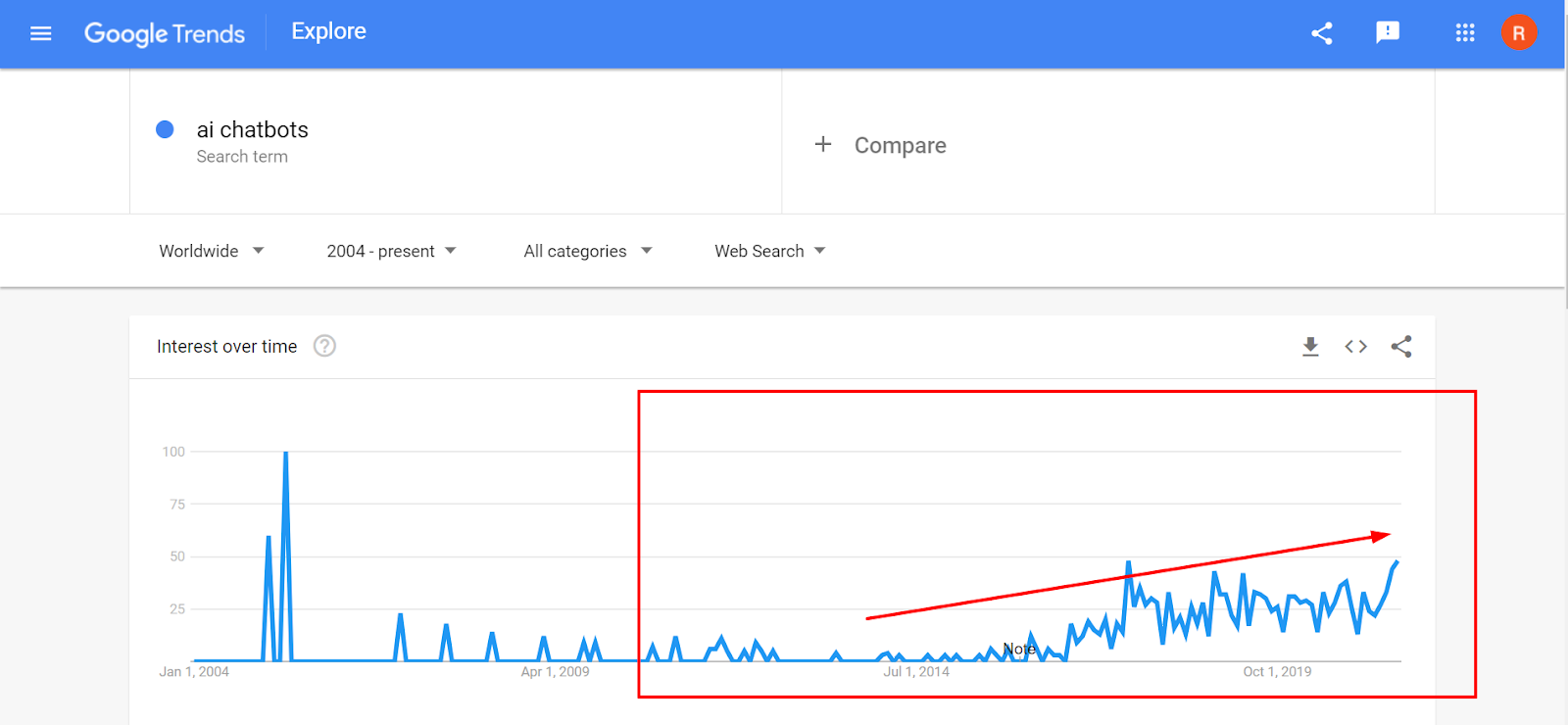
To build strong relationships with your customers, as a direct-to-consumer brand, it’s worth noting that 92% more brands use chatbots as part of their conversational marketing strategies. Since 2019, 11.9% of customers have started communicating with brands using chatbots.
Now with more intelligent AI chatbots, you can expect:
- faster and more reliable customer support
- human-like conversations with your customers
- reduced overhead by decreasing the hiring of live chat representatives
Some statistics to note:
- 87.2% of consumers have had either neutral or positive experiences with chatbots.
- 41.3% of your consumers are actively using chatbots and other conversational marketing tools while making their purchases.
- At the bare minimum, chatbots bring about 35-40% of response rates. And investing in better bot experiences can increase these rates to 80-90%.
- Including abandoned cart chatbots with Messenger can boost your eCommerce revenue by 7-25%.
Chatbots are getting smarter. Customers and companies are loving them each day. As the screengrab from Google Trends shows, chatbots are here to stay.
Voice Search
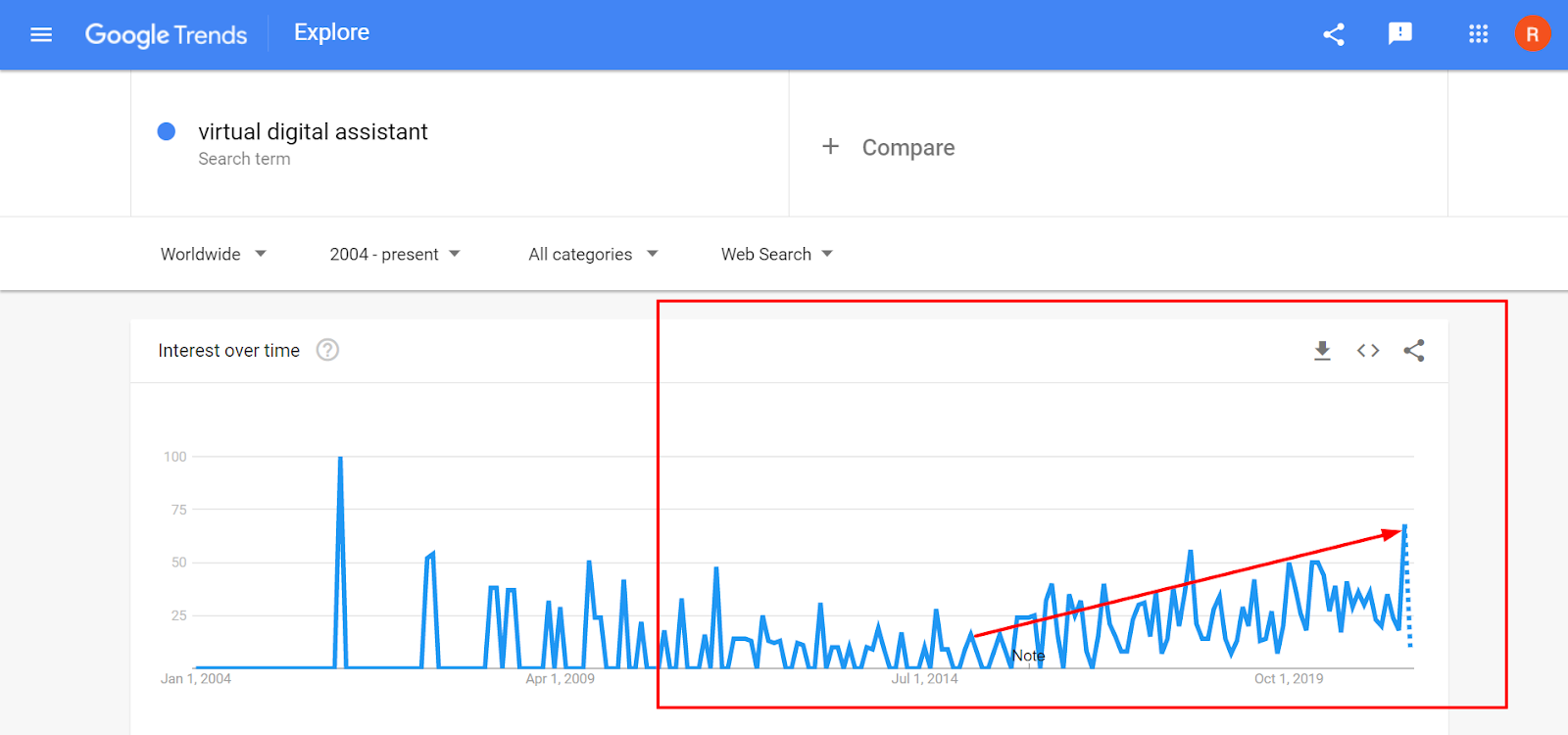
As a D2C brand owner, SEO (Search Engine Optimization) and SEM (Search Engine Marketing) drive your sales and web traffic. 65% of users (ages 25-49) are already talking to their voice-enabled devices every day. Social Media Today reports that 50% of users use voice-based search to research products. These numbers are constantly growing.
Some statistics you can’t ignore:
- Close to 10% of voice searches start with words like “who/ what/ where/ when/ why and how). This change in search is why you need to optimize your website content for voice search.
- Google reports that 52% of voice searches happen in the living room, 25% in the bedroom, and 22% in the kitchen.
- According to Search Engine Land, keywords you should focus on ranking for voice search include topics related to instructions instead of purchase-related terms.
- 26% of customers who own smart speakers have used them while purchasing online. And this number is growing daily.
Voice search is getting even more popular as days go by. Optimizing your eCommerce store for voice and implementing a content marketing strategy is the best way to establish your D2C brand as the leader in your niche.
Personalized Brand Experiences
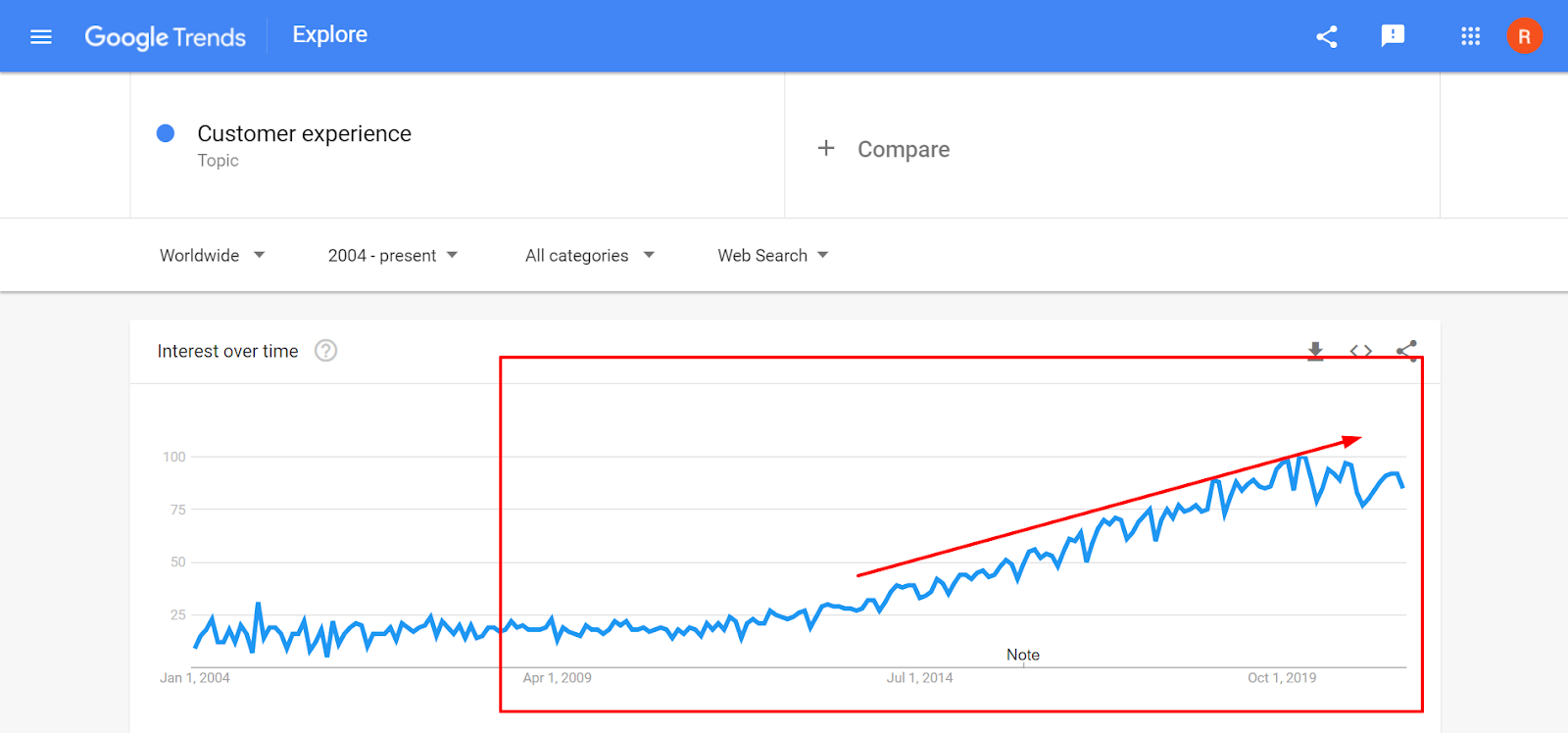
Today, most established retail brands include a direct-to-consumer channel. Research shows 51% of customers already expect brands to predict their needs and make appropriate suggestions. While personalization once meant:
- Including the customer’s first name in emails.
- Content that’s written in first/second-person perspective.
- Suggesting product recommendations and ads based on user history.
But in 2021, these are a given. In the future, personalized experiences would mean your brand develops a better way to personalize your customer’s exposure to your store.
As an example, take a look at Fit Liberty, the D2C line from Universal Standard. Within a year of purchase, their shoppers can exchange any clothing item at no extra cost. This elevated shopping experience is extremely personalized to the customer, thereby increasing brand loyalty.
Global Retail
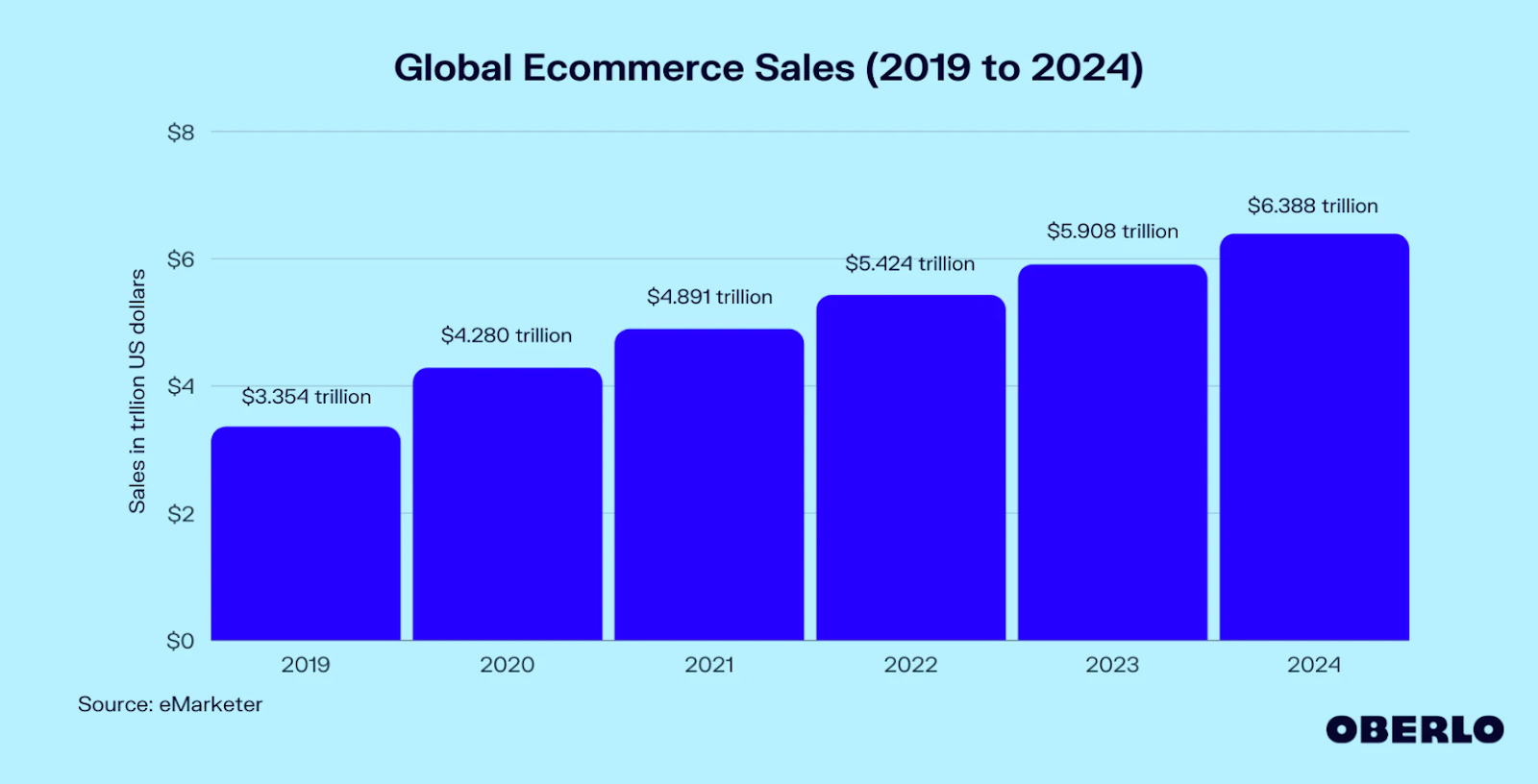
Shopify’s research suggests 42% of eCommerce transactions are happening in China. International markets are rapidly growing. Shopify predicts that one-fifth of direct-to-consumer sales will be cross-border purchases.
With more and more eCommerce platforms implementing better experiences for your customer, like multi-currency options, tax calculators, etc., the new D2C trend is to sell globally.
Even the World Trade Report suggests that 97% of small businesses are already exporting globally.
Adopting Omnichannel Strategies
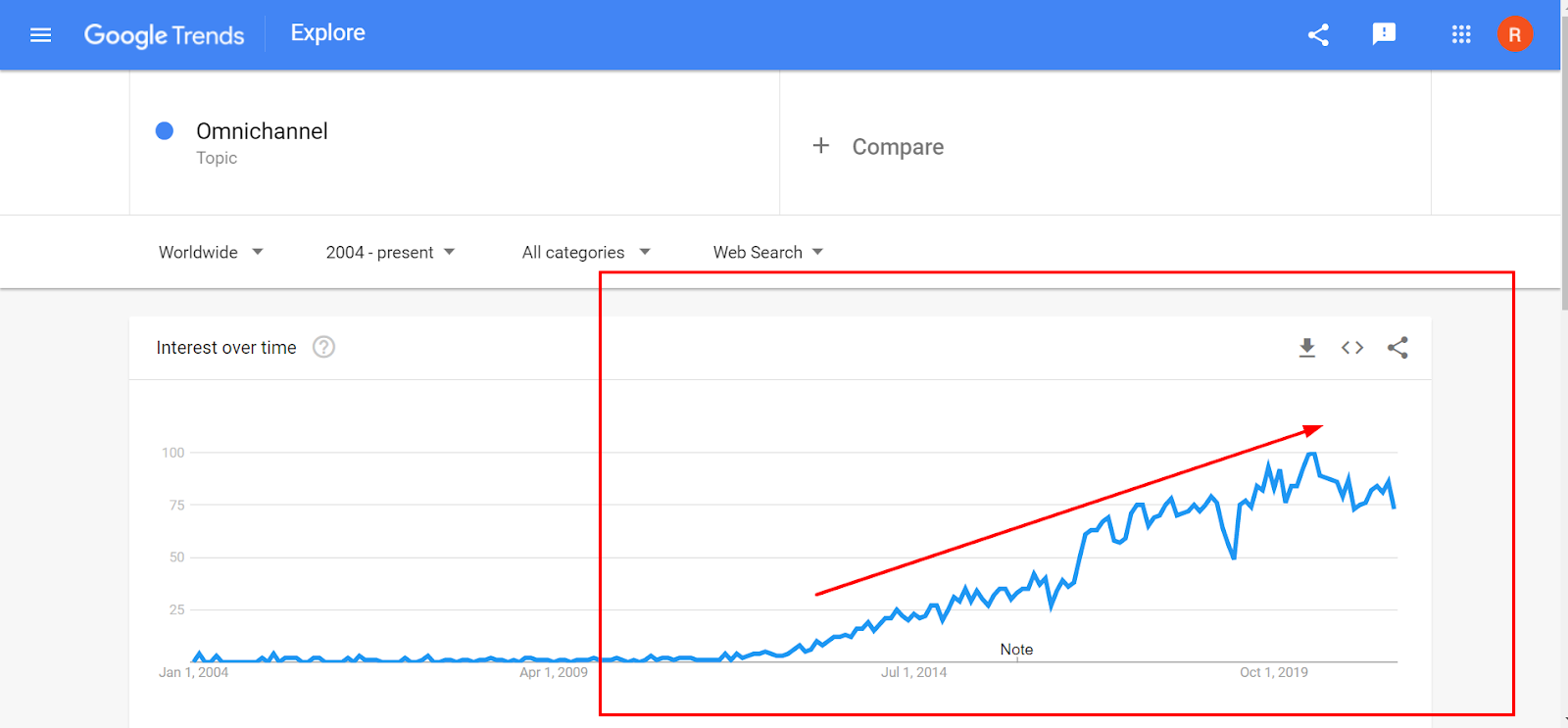
BigCommerce’s survey reveals that more and more Gen Z customers are purchasing online. Also, only 31.04% of millennials and 27.5% of Gen X customers buy products from brick and mortar stores.
Since 2020, retail has become a mix of physical stores and online store experiences. This fluidity in shopping is the reason behind needing an omnichannel approach to your eCommerce strategies.
Some stats to consider:
- you can drive 80% more engagement by implementing omnichannel strategies
- 59% of shoppers use Google for their research about a product before purchasing.
- According to Omnisend, marketers report 287% higher engagements by using 3+ channels for each campaign.
The future beholds D2C brands getting serious about creating more ways to engage their customers using a mix of physical and online channels.
Video Marketing and Brand Storytelling
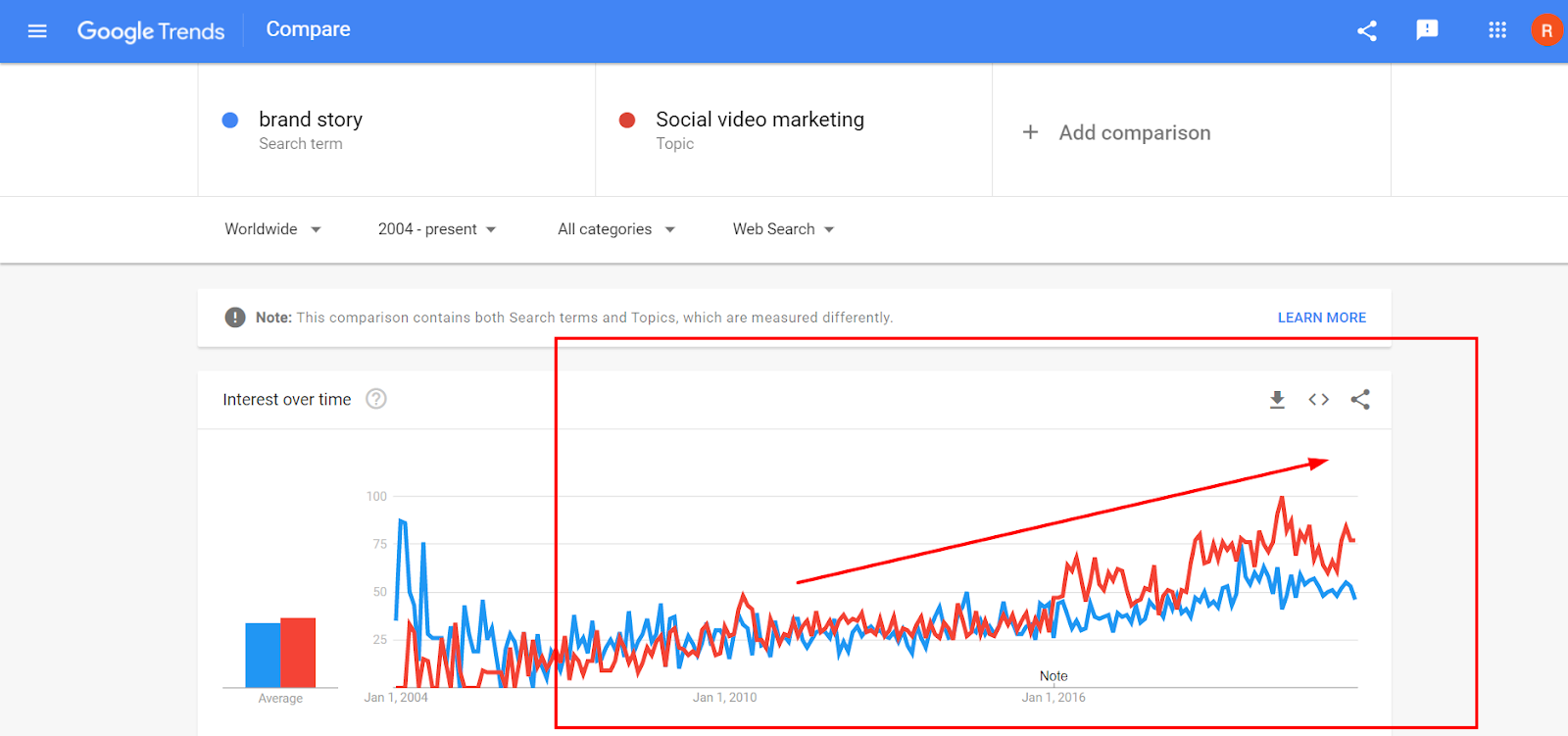
Up to 99% of brands are already using video marketing because videos are 600% more effective than other marketing strategies.
Here are a few things you need to consider:
- The average customer already has 9.5 video streaming apps installed on their mobile phones.
- Short-form videos (IG reels & Tiktoks) are gaining more popularity.
- Users coming to your eCommerce store through UGC (user-generated content) have a 184% chance of purchasing from you.
- Data-driven storytelling is the future for brands to share their values. This strategy builds loyalty.
(PS. For more information on how you can leverage videos and other marketing strategies to boom your brand, have a look at our article on the same)
Subscription Business Model Over Loyalty Programs
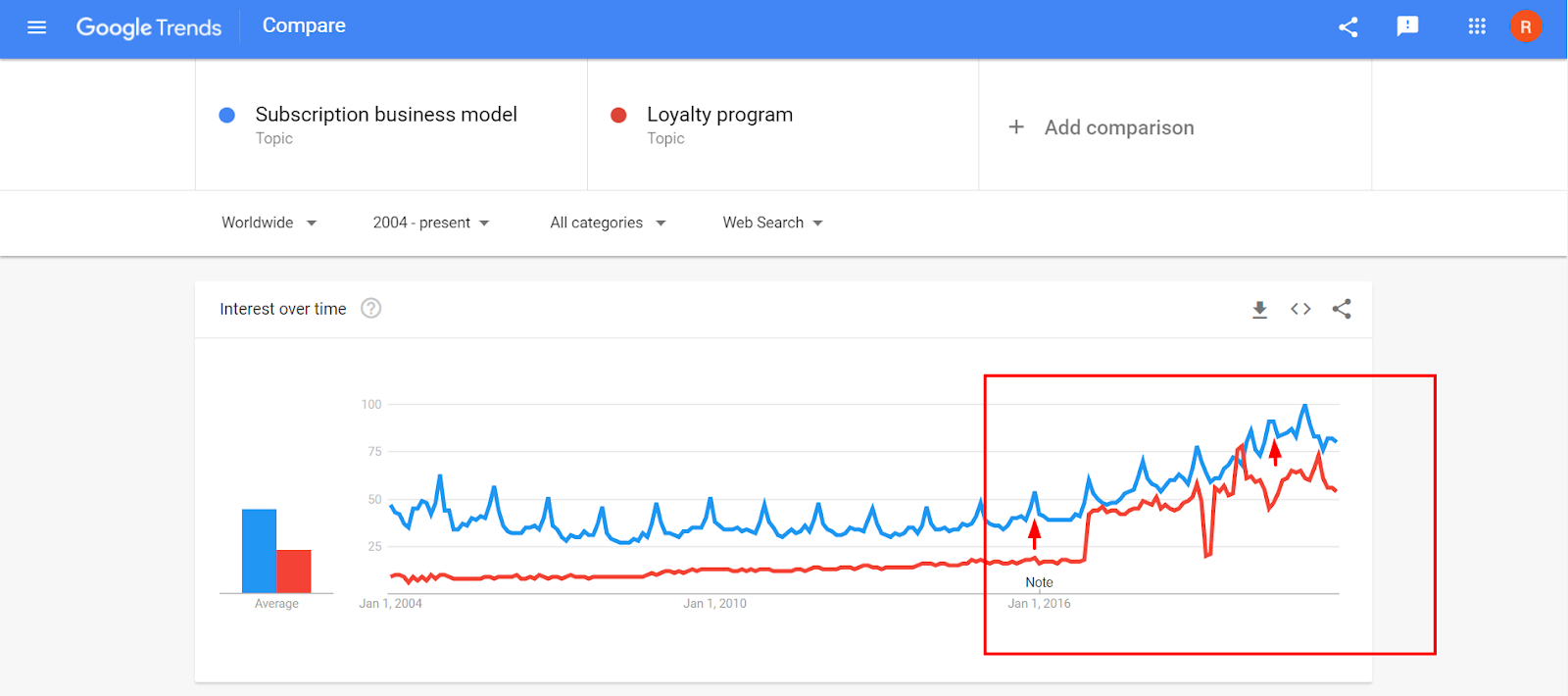
McKinsey reports that D2C subscription brands grow over 100% Y-o-Y. Also, 15% of consumers enjoy the subscription model. Our example of Dollar Shave Club reflects how a brand can go from 0 to $1 billion using a subscription model.
Some stats for you to consider are:
- 53% of software revenue will directly come from a subscription model.
- 70% of marketers report they will implement a subscription model in their marketing strategies in the coming year.
- 53% of CFO’s attribute 40% of their organization’s revenue to be recurring, thanks to subscription models.
Loyalty programs are losing the charm they once had. Your customers want to have an exclusive insider relationship with your brand. Membership models provide just that personalized brand experience.
Over To You
With all the stats trends we’ve shown you, it’s apparent that D2C is the future. Even for well-established brands, embracing a direct-to-consumer channel will provide you with a direct communication line to your consumers. This line will not only ensure a personalized experience but build strong loyalty.
The number one reason for the humongous success of many D2C brands is that they are great at solving their customer’s problems.
There is a customer need that has gone unmet for years on end, and finally, a direct-to-consumer brand comes and solves the problem while competing head-on with the giants in the industry.
Whether we look at Warby Parker, Casper, Everlane, Allbirds, or Dollar Shave Club, they worked towards ending the monopoly of the existing giants in the industry. Here’s where the disruption takes place.
A few questions you can ask yourself as a potential retail disruptor:
- How can my company end ___ problem of my target audience?
- What is one service my audience wants from me that no one else can provide?
- What are some stale business practices still prevalent in my industry I can solve?
- What business model can I create to increase recurring revenue?
- What are the core values that will drive my business for years to come?
These action points will help you find your business edge and brand philosophy. That said, parenting with a D2C expert like WebSpero can save you all the hassles of finding the right strategies. We’ve helped hundreds of our clients find success and we can do the same for you. Let us take care of your D2C strategies so you can focus on what matters most to you: your clients. Schedule a discovery call now.
